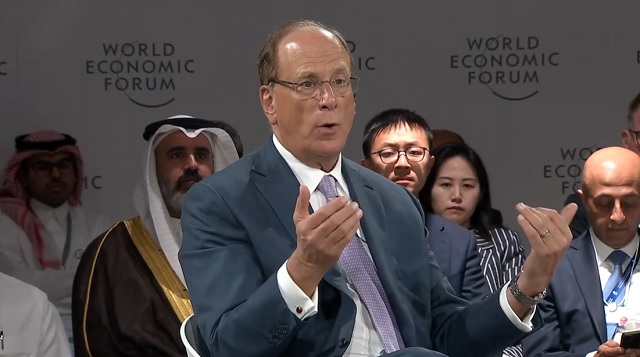Countries are beginning to stockpile Gold
by Lawerence Thomas, Gold Telegraph:

The Bank of China had increased its gold reserves from 1842.6 tons to 1,852 tons in December 2018. This increase represents the first major purchase of gold by the Bank of China since 2016. And there appears to be a purpose for the renewed interest in gold.
While the U.S. Federal Reserve Bank has attempted to keep gold prices low in an effort to preserve world dominance of the U.S. dollar, other countries have taken advantage by accumulating more precious metal at bargain prices.

China isn’t the only country bullish on gold. For the first time in years, both Poland and Hungary have amassed gold in 2018, and other central banks are following suit.
Many global central banks have been hoarding gold for more than a decade. Prior to the abandonment of the gold standard, this was common practice. The Federal Reserve or the Bank of England and other central banks were in the business of buying and selling gold and adding to their reserves. Gold was directly connected to the value of a currency. Many countries tied their currency to the value of the U.S. dollar.
Under President Nixon, the gold standard ceased to exist in 1971. The value of global currency quickly became arbitrary, depending what a country’s central bank said it was worth. Countries began to sell off their gold and continued to do so up to the 2007 financial crisis. This turned the selling tide around as central banks once again slowly began to buy gold. The main reason for gold’s renewed popularity is that many countries want to escape the dominance of the U.S. dollar, which has been the leading global currency. Russia is actively attempting to divert its own economy from the U.S. economy (or dollar). The more gold countries such as China and Russia hold, the greater the threat to the U.S. dollar.
Russia has been adding to its gold reserves since 2005. During the first half of this year, Russia purchased 3.381 million ounces of gold. Turkey added 1.223 million ounces to its reserves. Both countries have broken their previous gold-buying record. With global relationships becoming murky, and trade wars as a real possibility, many central banks will likely continue to covet precious gold. This is quite a change from two decades ago when central banks were eager to rid themselves of gold. Now, they can’t buy enough of it.
The Federal Reserve, in its effort to boost the U.S. dollar, has deliberately kept the price of gold at artificial bargain levels. China, Russia, and other countries are taking advantage of the Federal Reserve’s policy by buying gold on the cheap. Global gold purchases in the first quarter of 2018 rose 42 percent from the prior year or $5 billion worth of the precious metal. This is an increase of 22 percent for the same period in 2017. Other central banks have been amassing gold at a far greater rate than the Federal Reserve, leaving it in a very precarious position as the U.S. dollar faces an increasing threat. Russia alone now has a gold reserve in excess of $78 billion, or 2,036 tons, making it one of the top gold-holding countries in the world. Only the U.S. has more reserve gold, 8,133 tons. China and Turkey are closing the gold reserve gap at a rapid rate. All three countries have also sold off large amounts of their U.S. national debts in 2018, limiting their exposure to the U.S. dollar.
The world is edging toward increasing instability and possibly financial chaos. U.S. investors are already divesting themselves of portions of their stock portfolio in preparation of potential losses.
In addition, some of President’s Trump’s policies, such as the aluminum and steel tariffs, has affected international trade. China has decreased its purchasing of products such as soybeans, weakening the price of soy and the income of American farmers.
Another area of concern is the Federal Reserve’s rise in interest rates. These interest hikes have increased the value of the U.S. dollar, but have increased the debt value of many emerging markets. This could lead to another monetary crisis in these emerging countries, who will have a harder time repaying their dollar debts, let alone the interest thereon.
Loading...


